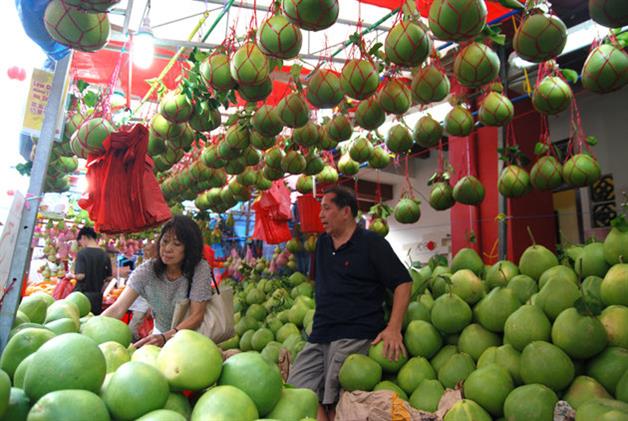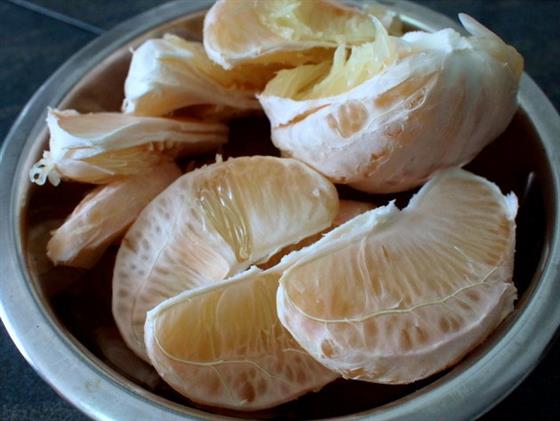
The Hainanese Pomelo Poetry
By Hong Xinyi - Wednesday, Feb 06, 2013
I first started cooking last year, when I decided to make a conscious effort to eat healthier. That meant more fruits and vegetables, which was how I found myself lugging home the first pomelo I ever bought, with a plan to attempt a Thai pomelo salad.
A problem swiftly presented itself – I had never dismantled a pomelo before. Thankfully, my grandmother came to the rescue. “Let me show you,” she said in Hainanese, as she used her trusty kitchen knife – it’s been in the family for decades – to slice off the top bit of the fruit, before making a few vertical incisions deep enough to cut into the peel and pith without touching the flesh of the pomelo.

These cuts ease the process of using your fingers – and considerable strength – to pry the peel and pith off the fruit. “Before you start peeling, you should say something to make sure the flesh is sweet,” my grandmother said. She then rattled off some phrases in Hainanese, but too quickly for me to make out what they meant (my mastery of the dialect is mostly limited to everyday phrases).
The words seemed to rhyme, like a limerick – they had a pleasing, and somehow funny, ring to them. I remember breaking into a laugh at the unexpected pleasure of mixing poetry with pomelos. The peel and pith could be left out for a day to dry, and then added to bathing water, my grandmother said. This is a ritual that bestows good luck, apparently, and something people used to do in her hometown, where almost every household had a pomelo tree.
A few weeks later, at a family dinner, I tried asking my grandmother and parents about that pre-peeling words. My Mum and Dad, who are both Hainanese, had never heard of this practice of reciting anything before peeling a pomelo before. My grandmother, who is in her 90s, was struck with stage fright when I asked her to repeat the rhymes, and couldn’t remember the words.
Undeterred, I decided that having a pomelo in her hands would definitely help to trigger her memory. And it worked – I brought home another pomelo, and managed to transcribe the sounds of the brief rhyme as she said them. This is what it sounds like: “Gya dun kia bey you ji jia, diam diam. Ah, dong di ga, diam diam, boh jiong dui.”
A literal translation goes something like this: “Peeling pomelo for the grandchildren, let it be sweet. Ah, full of pulp, let it be sweet, not sour.” My favourite part is the exclamation of “Ah”, uttered as you pry off the stubborn peel, and how it rhymes with the word for pulp (ga). It’s really fun to say.
My grandmother says that she learnt this from her mother. According to Mr Ong Siew Peng, an expert on Hainanese food culture, such rhymes were very common among the older generation in Hainan, although they are not very well-known in Singapore.

“These are folk rhymes, and they are present in the culture of every dialect group,” he says. “There are rhymes not just about food, but also about courtship and lullabies, and often they are quite witty. But nowadays, even in China, very few people remember these things. Coming up with these rhymes used to be a form of entertainment back in the days when there wasn’t much to do in the countryside. Now, people just watch TV.”
Mr Ong had never heard of my grandmother’s pomelo rhyme, but he did share another Hainanese rhyme about chili: “Jia liap ang ang, nang bo ga yi, yi ga nang.” It means something like this: “A cluster of red, you don’t bite it, it bites you.” The rhythm of this has a really delicious snap to it. Who knew talking to your food could be such fun?


